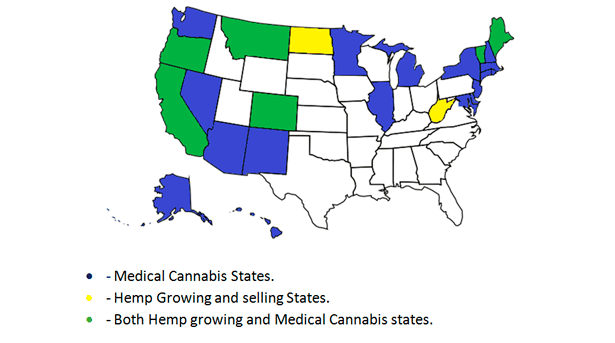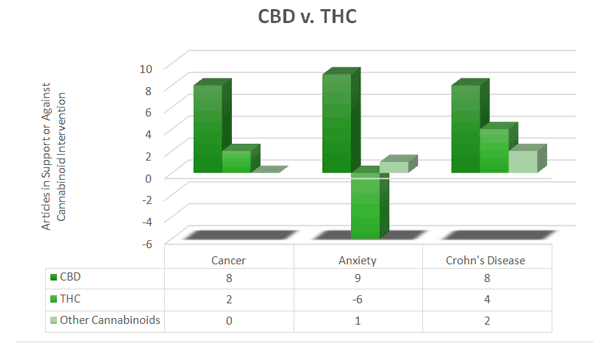
Why CBD is what you are looking for!
Medical Marijuana Exposed!
By Alan Mathon, Director of Product Development at URVape, Inc.
The discussion of Medical Marijuana is heard globally these days and there is an increasing amount opinion, data and information published on it, but if you needed it to improve the quality of your life, would you take it? In this article, we discuss that the sought after “medicinal” property of medical marijuana is in fact a natural chemical derived from both the cannabis plant we know as marijuana, and its cannabis cousin, Industrial Hemp. The chemical is Cannabidiol (commonly known as CBD) which, when derived from Industrial Hemp, is available anywhere in the states!
History of Medical Marijuana
Everyone thinks that the legal cannabis fight started in California and yes, legal sale and distribution did start in 1996 from proposition 215; but cannabis’ legal story starts way before, same coast, just north in Oregon. 1973 was the year when cannabis was decriminalized in Oregon. Oregon also set the stage for Alaska. The Alaskan Supreme Court in 1975 had a case called Ravin v. State which allowed low level possession of cannabis due to privacy clauses. It took some time and potential laws to take the fight away from Oregon and Alaska. By now, the number of states that deem it legal to purchase and sell cannabis (under State laws) is close to half of the United States.
One very important bit of information that needs to be kept in mind is that, even if cannabis is legal in a state, the Federal Government’s Justice Department and DEA, though de-funded by Congress for enforcement procedures, continue to maintain that they have the authority and responsibility of enforcing the archaic laws regarding cannabis. Who has more money and power? The D.E.A. (Drug Enforcement Administration) has the power and they don’t need to look at state law if they get a direct order for funding to raid medicinal or recreational stores. It happens, go on the internet and look this topic up, you will see countless articles discussing raids in Los Angeles, Denver, San Andreas, Beverly Hills, etc…
In conclusion, medical marijuana has come a long way in the legal system but the Federal Government still recognizes medical cannabis (including the growing of Industrial Hemp) as a Schedule I drug since it was categorized as such in 1970 from the Controlled Substances Act (CSA) which states that: cannabis has “a high potential for abuse; … no currently accepted medical use in treatment in the United States,” which means the D.E.A. can enforce and the Justice Department can prosecute. Sadly, medical cannabis still has a way to go, though congress is making some attempts at re-categorizing cannabis.
Above is a map showing the current medical/recreational cannabis states as well as states that, in accordance with the 2014 Farm Bill, will be allowed to grow and sell industrial hemp.
Medical Cannabis and Hemp States February 15th, 2015.
The Upside:
CBD It isn’t all legal gloom for consumers seeking the natural benefits of medical marijuana.This is because of the occurrence of CBD in Industrial Hemp. Users of medical marijuana actually derive their benefits from the CBD, distinct and apart from the psychoactive THC which stands for delta-9-tetrahydrocannabinol,which induces the “high” associated with marijuana. CBD is what is known as a “cannabinoid.” These are special chemical compounds that attach to many different receptors in your body and each compound has a different associated response or effect inside the body. CBD is the cannabinoid that has many people claiming benefits for an astounding number of illnesses.
The chart below discusses three of the most searched for chronic illnesses that appear on Google when consumers look up “medical cannabis”: Cancer, anxiety, and Crohn’s Disease. All of these illnesses have the potential to be chronic and thus can be very difficult to live with depending on severity. In this chart we analyze what 30 case studies and peer reviewed articles say about which part of the cannabis plant actually has potential for helping the patient: THC, CBD, and or other cannabinoids. Please note that one article can mention one or more cannabinoids beneficially or negatively affecting the individual(s) for each illness.

As seen in the chart, CBD is the highest recommended choice for all illnesses. The point is to show that CBD has the potential to improve quality of life. CBD also has many other claims and benefits that can be found online and supported by many more research papers, peer reviewed articles, and or case studies. CBD is the main cannabinoid in medical cannabis that consumers seek out for improving their quality of life in relation to many chronic illnesses.
How do you get CBD?
History tells us that on August 2nd, 1937 President Franklin D. Roosevelt banned cannabis production, distribution, and usage as well as industrial hemp (another member of the Cannabis genus). Since industrial hemp is in the same genus of medical cannabis, CBD and THC is found within this plant. Industrial hemp can be imported into the United States with a THC content less than 0.3%, which is how industrial hemp (Cannabis sativa) can contribute CBD to the consumer.
What is Hemp?
Industrial hemp is related to medical cannabis through its genetics and shares many similar chemical compounds that medical cannabis shares such as CBD and THC. Industrial hemp has been used throughout the ages as a fibrous material which has many beneficial purposes such as but not limited to: paper, sailing masts, rope, nutrition sources, hempcrete (hemp mixed with lyme to form a dense and durable material). Hemp has also been used to remove various toxins from the ground and strengthen soil composition. The hemp plant is like a “sponge” when it is planted, it sucks up everything including heavy metals, bacteria, and other toxins; one of the reasons the hemp plant produces CBD is to protect itself from bacteria and other toxins, this is another benefit that CBD can give us. CBD has been known to fight off Methicillin-resistant Staphylococcus aureus (MRSA). CBD isn’t just restricted to Medical Marijuana, CBD exists in industrial hemp as well and this is how CBD can appear in the marketplace.
Conclusion
Cannabis is a wonderful plant for people to use in legal states to achieve a better quality of life for various purposes; the beneficial compound that attributes the better quality of life for many chronic illnesses is CBD and, by itself, any consumer has access to Industrial Hemp derived CBD no matter where you live in the United States or European Union. Claims of improving the quality of life from cancer, anxiety, Crohn’s Disease, and bacterial infections are phenomenal, so let’s ask that question again; if you needed CBD to improve the quality of your life, would you take it?
